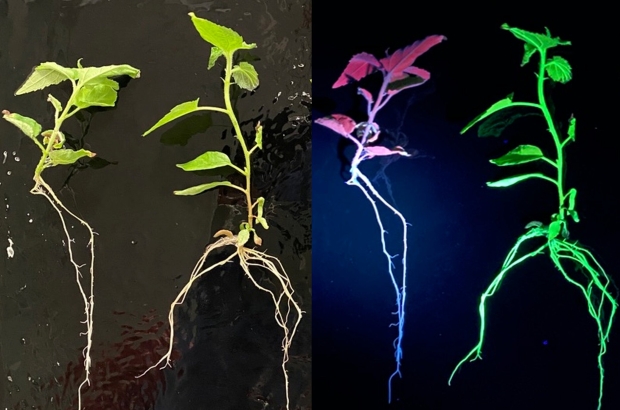New technology developed by the Department of Energy's Oak Ridge National Laboratory (ORNL) allows the activity of CRISPR to be seen with the naked eye and an ultraviolet flashlight.
In a paper published in ACS Synthetic Biology, scientists describe the development and function of this technology. Their process involves redirecting CRISPR from its target sequence of DNA to a section of the genome that encodes for a non-functioning green fluorescent protein (GFP). CRISPR edits the genes in this sequence, allowing the production of functioning GFP, which leads to a green glow signaling CRISPR activity.
"Before this, the only way to tell if genome engineering occurred was to do a forensic analysis. To be successful, you would need to know what the genome looked like before it was rewritten. We wanted to design a platform where we could proactively observe CRISPR activity," said Paul Abraham, head of ORNL's Secure Ecosystem Engineering and Design Science Focus Area.
To function normally, CRISPR binds with a short sequence of RNA known as guide RNA that then matches with a corresponding DNA sequence. The researchers used a biosensor guide RNA that intercepts CRISPR and replaces the gene sequence for GFP one encoding for a similar reporter protein dubbed eYGFPuv. While GFP requires a microscope to view its glow, eYGFPuv is visible under an ultraviolet "black light," allowing researchers to quickly tell if the gene edits they have made were successful.
You can read more from the paper here.



